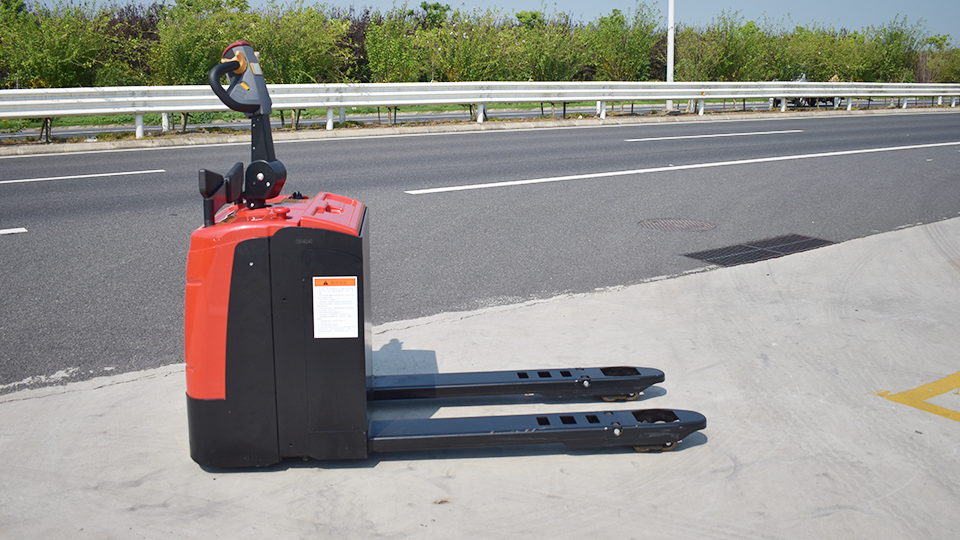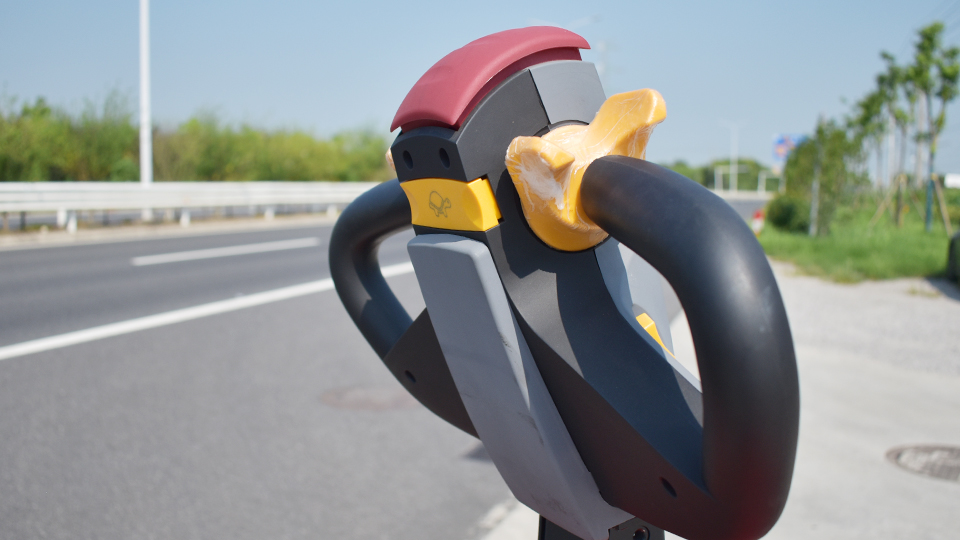
The Unsung Hero of Material Handling: Deconstructing the Pallet Truck
In the intricate dance of logistics and warehousing, where efficiency and speed are paramount, the pallet truck often plays the role of the unsung hero. While perhaps not as visually imposing as a forklift or as specialized as a reach truck, the pallet truck is a fundamental and indispensable piece of equipment for moving palletized goods over short distances. Its simplicity belies its crucial contribution to streamlining material flow, reducing manual labor, and enhancing overall operational efficiency. This technical article delves into the anatomy, operation, variations, and applications of the pallet truck, exploring its significance as a cornerstone of modern material handling.
The Core Function: Horizontal Material Movement
At its heart, a pallet truck is a wheeled device designed to lift and transport palletized loads horizontally. Unlike forklifts or stackers that focus on vertical lifting, the primary function of a pallet truck is to facilitate the efficient movement of goods at ground level. This seemingly straightforward capability underpins a vast array of tasks within warehouses, distribution centers, retail environments, and manufacturing facilities.
Anatomy of a Pallet Truck: Simplicity and Functionality
The basic design of a pallet truck is remarkably simple, contributing to its robustness, ease of use, and relatively low cost. Key components include:
Forks (or Tines): Two parallel steel blades that are inserted into the openings of a pallet to lift the load. The dimensions and spacing of these forks are typically standardized to accommodate common pallet sizes.
Chassis (or Frame): The structural backbone of the pallet truck, providing support for all other components and bearing the weight of the load. It is typically constructed from heavy-duty steel to withstand demanding operational conditions.
Wheels: Pallet trucks utilize multiple wheels to distribute the load and facilitate movement. These typically include:
Load Wheels: Located at the tips of the forks, these wheels bear the primary weight of the palletized load. They are often made of durable materials like polyurethane or nylon to offer a balance of load capacity, rolling resistance, and floor protection.

Steering Wheels: Located beneath the handle, these wheels allow the operator to steer the pallet truck. They are typically larger than the load wheels and made of similar robust materials.
Hydraulic Lift Mechanism: This is the core of the lifting functionality. A hydraulic pump, operated manually or electrically, raises the forks a few inches off the ground, just enough to clear the floor for movement.
Handle: A long, ergonomic lever connected to the steering mechanism and the hydraulic pump. It allows the operator to steer, pump the hydraulic lift (in manual models), and control the direction of movement. The handle often incorporates controls for releasing the hydraulic pressure to lower the forks.
Types of Pallet Trucks: Adapting to Diverse Needs
While the fundamental principle remains the same, pallet trucks come in various forms, each designed to address specific operational requirements and user preferences. The primary distinctions lie in their power source and additional features:
1. Manual Pallet Trucks (Hand Pallet Trucks):
Operation: These are the most basic and widely used type. The hydraulic lift is powered by manual pumping of the handle. To raise the forks, the operator repeatedly pumps the handle up and down. Lowering is typically achieved by pulling a lever or trigger on the handle, which releases the hydraulic pressure. Steering is also manual, controlled by maneuvering the handle.
Advantages: Simple design, low cost of acquisition and maintenance, lightweight and maneuverable in tight spaces, no need for charging or fuel, quiet operation.
Disadvantages: Requires significant physical effort from the operator, especially when moving heavy loads or over longer distances, slower operation compared to powered models.
Applications: Ideal for short-distance movement in retail stores, small warehouses, loading docks, and areas where power access is limited or infrequent use doesn't justify a powered model.
2. Electric Pallet Trucks (Powered Pallet Trucks):
Operation: These models feature an electric motor that powers both the lifting and the travel functions. They are typically powered by rechargeable batteries. Controls for forward/reverse movement, speed, and lifting/lowering are usually located on the handle. Some models may offer a platform for the operator to stand on, increasing travel speed and reducing fatigue over longer distances.
Advantages: Significantly reduces operator fatigue, increases efficiency and speed of material movement, suitable for longer distances and heavier loads, often includes safety features like automatic braking.
Disadvantages: Higher initial cost, requires charging infrastructure and battery maintenance, heavier and less maneuverable in extremely tight spaces compared to manual models.
Applications: Well-suited for larger warehouses, distribution centers, manufacturing facilities, and any operation involving frequent movement of palletized goods over moderate to long distances.
3. Rider Pallet Trucks:
Operation: These are a more advanced type of electric pallet truck that features a platform or compartment for the operator to ride on. This allows for even faster and more efficient movement over extended distances. Rider pallet trucks often have more sophisticated controls and higher load capacities.
Advantages: Maximum efficiency for long-distance horizontal transport, reduced operator fatigue, higher travel speeds, increased load capacity in some models.
Disadvantages: Highest initial cost among pallet truck types, requires more space to maneuver, may not be suitable for very congested areas.
Applications: Primarily used in very large warehouses, distribution centers, and cross-docking operations where moving goods quickly across the facility is critical.
4. Rough Terrain Pallet Trucks:
Operation: Designed for use on uneven or outdoor surfaces, these pallet trucks typically feature larger pneumatic or solid rubber tires, increased ground clearance, and a more robust construction. They may be manual or powered.
Advantages: Can operate on surfaces where standard pallet trucks would struggle or be unable to move, expands the usability of pallet trucks beyond smooth indoor floors.
Disadvantages: Can be less maneuverable in tight indoor spaces, may have a lower lifting capacity compared to standard models.
Applications: Construction sites, nurseries, outdoor storage areas, and any environment where palletized goods need to be moved over rough or unpaved surfaces.
Operational Principles: Simple Yet Effective
The operation of a pallet truck, regardless of its type, follows a basic sequence:
Positioning: The operator maneuvers the pallet truck so that the forks are aligned with the entry points of the pallet.
Insertion: The forks are carefully inserted into the pallet openings.

Lifting: The hydraulic mechanism is activated (either by manual pumping or an electric motor) to raise the forks and lift the pallet a few inches off the ground.
Transportation: The operator moves the pallet truck, pulling or pushing the load to the desired location. Steering is achieved by turning the handle.
Lowering: At the destination, the hydraulic pressure is released, gently lowering the pallet back to the ground.
Withdrawal: The forks are carefully pulled out from the pallet.
Safety Considerations: Prioritizing Operator Well-being
While seemingly simple, the operation of pallet trucks necessitates adherence to safety guidelines to prevent accidents and injuries:
Proper Training: Operators must be adequately trained on the safe operation of the specific type of pallet truck they will be using.
Load Limits: Never exceed the rated load capacity of the pallet truck. Overloading can lead to instability and equipment failure.
Load Stability: Ensure the load is stable and evenly distributed on the pallet before attempting to move it.
Clear Pathways: Keep pathways clear of obstructions and debris to prevent tripping hazards and ensure smooth movement.
Foot Protection: Operators should wear appropriate footwear to protect their feet.
Awareness of Surroundings: Operators must be aware of their surroundings, including pedestrian traffic and other equipment.
Safe Operating Speed: Operate the pallet truck at a safe and controlled speed, especially when turning or navigating ramps.
Regular Inspection: Pallet trucks should be regularly inspected for any signs of damage or wear. Malfunctioning equipment should be taken out of service immediately.
The Indispensable Role in Material Handling Efficiency
The pallet truck, in its various forms, plays a vital role in enhancing the efficiency of material handling operations:
Reduced Manual Labor: It significantly reduces the physical strain associated with manually moving heavy palletized loads, improving worker safety and productivity.
Faster Material Flow: Pallet trucks enable quicker and more efficient movement of goods compared to manual carrying, streamlining workflows and reducing turnaround times.
Improved Organization: By facilitating the easy relocation of pallets, pallet trucks contribute to better organization and space utilization within warehouses and other facilities.
Versatility: Their adaptability to various environments and load types makes them a versatile tool across a wide range of industries.
Cost-Effectiveness: Compared to larger material handling equipment, manual pallet trucks offer a cost-effective solution for short-distance horizontal transport. Even powered models can offer long-term cost savings through increased efficiency and reduced labor.
Conclusion: The Foundation of Efficient Material Flow
The pallet truck, often overlooked in favor of its more towering counterparts, stands as a fundamental pillar of efficient material handling. From the simple manual models to the sophisticated rider versions, these unassuming machines provide the essential capability of horizontal pallet movement, underpinning countless logistical operations. Their simplicity, versatility, and contribution to reducing manual labor and accelerating material flow make them an indispensable asset in warehouses, distribution centers, retail spaces, and manufacturing plants worldwide. Understanding the nuances of different pallet truck types and their safe operation is crucial for any business seeking to optimize its material handling processes and ensure a smooth and efficient supply chain. The unsung hero of the warehouse floor, the pallet truck, continues to quietly and effectively move the world of commerce.
Name: selena
Mobile:+86-13176910558
Tel:+86-0535-2090977
Whatsapp:8613181602336
Email:vip@mingyuforklift.com
Add:Xiaqiu Town, Laizhou, Yantai City, Shandong Province, China